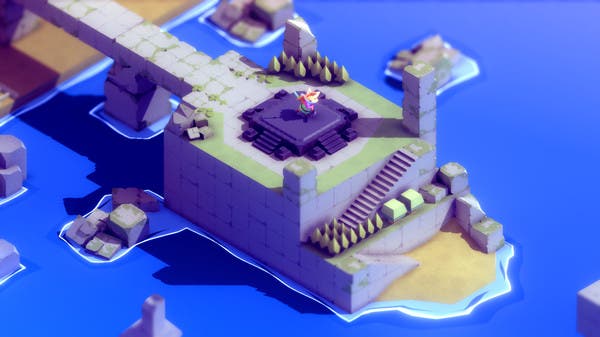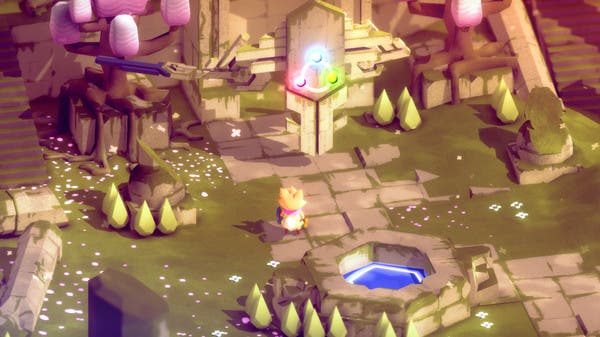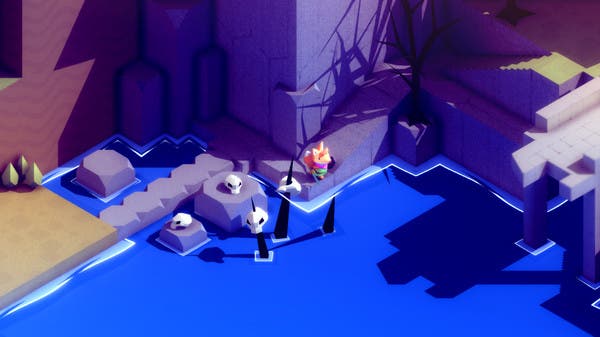Tunic still lacks a release date, but already has speedrunners interested
Foxy bingo.
Tunic, the tiny fox adventure which recently gained a great demo on Steam and Xbox, still lacks a release date. Alas, despite having a long chat about game secrets with Tunic's creator Andrew "Dicey" Shouldice, I could not uncover the date we will all explore Tunic's world further.
But there are promising signs Tunic - already some six years in the making - is finally coming soon, and interest in the game is growing. Apart from the obvious audience of Zelda fans, this dinky adventure has also caught the eye of the speedrunning community.
"Of the entire team, I'm the person with the least experience shipping a title like this," Shouldice says, "like on a console and stuff like that. I had to do a lot of learning, especially early on, about what it means to design a game."
Tunic began as a solo project - Shouldice quit his previous development job to focus on it full-time back in 2015. But as time wore on he realised he needed the support of others to get the game published. He's now working with Finji, the indie publisher behind Chicory, and others to get the game out the door.
"Adam [Saltsman, Finji co-founder] just this morning was talking about this rule of thumb where, any time you've made a game, you've probably made a game two and a half times," Shouldice says. "Like, two and a half times the amount of work has gone into it, and on the amount of game that has been made that's just scrapped, as you need to learn what the game really is along the way."

By 2018, Shouldice says he knew the shape of the game, what made it "Tunic-y" and then it was just a matter of filling out his planned world with content. An isometric Zelda-like set in a world where its foxy hero does not belong, Tunic leans heavily into player exploration and lets you discover mechanics and items organically, at your own pace and with no hand-holding whatsoever.
One of Tunic's best elements is the pages of a book - a kind of game manual for the world - which do explain more about your foxy hero's surroundings or abilities. "Manuals are cool things we have lost over the years," Shouldice says. "Old game manuals would do neat things like hide secrets in them, maps with locations marked but no explanation offered. That's game design in and of itself. We're hoping to touch on that at least a little bit, with the added benefit of being able to hide pages around the world."
"The idea of a critical path kind of exists," adds Kevin Regamey, creative director at music and sound effect specialists Power Up Audio, and a collaborator on Tunic. "There's a certain route through the game which we expect the majority of players to take, just on average, but that is not at all the way you have to go... if people sequence-break, it still fits the in-universe lore as the world wasn't meant for you in the first place."
It's this element - finding the optimal path, finding ways to go even faster - which has already caught the eye of Twitch streamers and speedrunning specialists.

"We love seeing folks like Trihex on Twitch who played something like 20 hours of the demo on stream, try various speedrunning tactics," Regamey continues. "One very basic example is in the game you can dodge and hold the button to run. It turns out if you just drain your stamina and just 'scare dash' forever, it's actually faster than sprinting. We never considered this, even though it might seem obvious to test.
"But [Trihex] came back and said 'I kinda like this though'. You can do that but it means wherever you're running to, you won't be equipped for battle at that point - you need your stamina - so it might better to save your stamina and just take the time loss. It leads to some interesting choices in a speed-running scenario."
People have been playing Tunic's demo a lot - and many, like me, are jumping straight back into it when its Game Over screen hits after reaching a certain point. Even after a couple of runs through, even after killing that skeleton, you can tell there are still more secrets hidden away to discover.

"More often than not" people would go straight back in, Regamey agrees, after watching plenty of the demo being played on Twitch. The experience of seeing the unfinished game played was sometimes "brutal", he says, due to the unfiltered feedback, but ultimately more useful than showing the demo at a convention where people might be more guarded if they didn't like it.
Has the demo influenced anything in Tunic? Have any adjustments been made? Shouldice says a few damage numbers have been tweaked, but more often than not the feedback has been that people are "pleasantly surprised" by the challenge of the cute-looking game.
"There's an aura of mischievousness attached to a fox which has worked out," Shouldice says of players' attachment to Tunic's unnamed hero. "As a player, it's ambiguous enough that anyone can see themselves and say, 'I'm this fox, getting into trouble'. Also it turns out, not something I planned for, but foxes are quite pointy - the pseudo-top-down perspective makes it a helpful tactical consideration when in combat."

But when will the game be finished? Shouldice is coy. "We have no official release date yet but as you can probably guess from things like the demo and talking to press, we've rounded a corner and the peak of the mountain is in sight. It's extremely exciting and anxiety-inducing.
"One of the advantages of working with a team is having people with experience in project management, who can be like 'this is good enough, move on!'" he concludes. And after six years of development, Tunic is looking very good indeed.
















